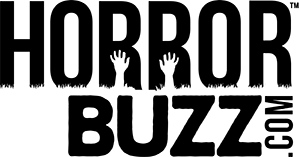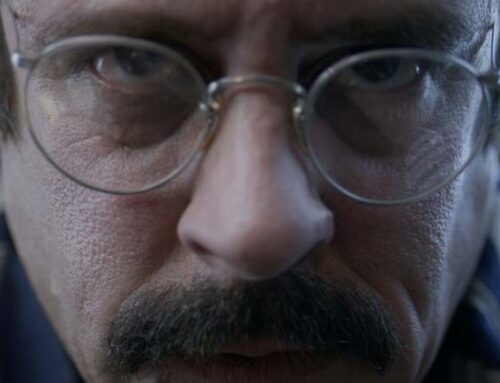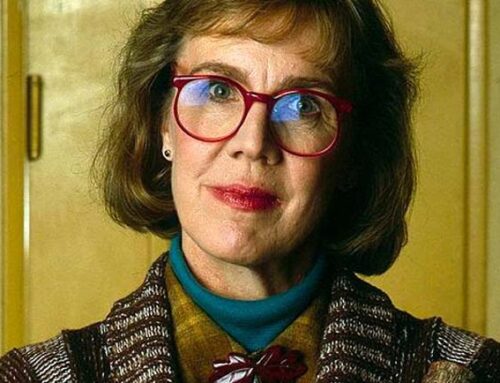I had the opportunity to connect with Craig Scorgie, an editor and visual effects artist, who recently edited the Pakistani-Canadian supernatural drama film In Flames. Craig discussed with HorrorBuzz how his close collaboration with director Zarrar Khan unfolded throughout their work together, how he dealt with the metaphorical elements of the film as an editor, and the creative opportunities presented by ensuring the message was received across multiple cultural communities. A seasoned creative, Craig has previously worked on feature films, web series, shorts and documentaries, and is based in Canada. Continue reading to learn more about his editing work for the film and how he brought his personal touch to the project.
For In Flames you collaborated closely with director Zarrar Kahn from the inception of the project to completion. Could you describe how your collaboration influenced the editing process and contributed to the film’s overall vision?
Craig Scorgie (CG): Zarrar is a wonderful director to work with because he has a strong vision, but also welcomes experimentation and discovery. As an editor, I may have an idea of how the film might come together, but I am often proven wrong by what we have in the footage. So in editing, vision can be a great blueprint to start with, but we are always humbled by the footage and the process.
During the editing of In Flames, our initial focus was on staying true to the script’s original intentions. However, films almost always evolve beyond their initial concept due to various influences from the actors, the cinematographer, the location, the weather that day, etc. All these variables completely change the film that you have in your footage. It’s crucial for me, along with the director, to be mindful of these factors and be open to discovering a new vision for the film. By being attentive to the footage and test audience reactions, we were able to slowly make adjustments to make it better, slowly shaping together a film that far surpassed our initial expectations.
This path led us to a film that was perhaps more naturalistic and nuanced than what we had in the script, and also one that was a little less textbook horror. We ended up leaning a lot more into the dramatic and humanistic aspects of the story, and these are all the things that make this film special I think.
So with all this in mind, I don’t think it would be accurate to say that I was contributing to an overall vision as an editor. Rather, I’d say that a vision was shed and we discovered something completely new by listening intently to the footage, others, and each other.
In Flames deals with themes of familial secrets and societal pressures, using horror as a metaphor. How did you approach editing to enhance the film’s commentary on these themes while maintaining its horror elements?
CG: Instead of focusing on typical horror techniques and editing styles, I centered my editing approach for this film around the characters, the world they inhabit, and the needs of the story itself. I believe that the suspense and horror in the film stem from these elements. By ensuring their essence is effectively conveyed in the edit, the horror aspects naturally come to the forefront.
As Mariam’s mental state deteriorates, I intensified the editing to reflect her instability. This involved employing aggressive and erratic cuts between scenes, cutting on hard syllables of dialogue, creating a frenetic and off-kilter pacing in the shots. Such techniques can go a long way in creating a sense of unease. Also to counteract this at some moments, I strategically incorporated quiet and calm moments to build tension. Once you’ve set the table of a scene and establish what could happen, I would play around a lot with quieting the scene, pulling sound out and slowing things down to give the audience a sense that anything could happen at any moment.
Given the cultural and linguistic differences, how did you ensure that the subtitles not only translated dialogue but also conveyed the emotional depth and subtleties of the performances?
CG: Unfortunately I am not fluent in Urdu, so I was not responsible for the translation and creation of the subtitles. All of the credit for that goes to our director, Zarrar Kahn! He created the subtitles with me as we worked on the edit.
What I am able to speak on is my experience editing a film in a language I didn’t understand. Zarrar is fluent in Urdu and took on the initial editing pass, known as the Assembly edit. He provided me with his assembly along with English subtitles. Using this as a reference, I could discern the phonetics of each line and search for the best performances across different takes. Since the characters mostly stuck to the script, I didn’t require much knowledge in the language once I had this reference.
Editing in another language turned out to be surprisingly manageable once I got into the rhythm of it. In fact, I believe it offered certain advantages. When you do not understand dialogue, it really brings actor performance to the forefront. It was much easier for me to focus solely on the actor’s vocal nuances, their eyes, their microexpressions, than if I was able to understand the dialogue. I realized that if I was able to understand the line solely from the emotional delivery of it, this would be my compass.
Sometimes I was a little off with the subtitles and Zarrar would correct me, but that didn’t happen often. After a while, I didn’t even need to look at the subtitles for reference. This film’s dialogue lives in my brain now like music in my head. I have every syllable memorized, even though I don’t understand a single word. Quite an interesting experience to have as an editor!
Can you share a particularly challenging scene from In Flames and discuss the creative solutions you employed during the editing process to overcome those challenges?
CG: There were a few scenes in the film that weren’t quite landing in the first couple drafts of the edit. One of these is a scene that occurs after Mariam has an asthma attack, recovering in bed at home. In this scene, her mother and uncle step out of the room and have a conversation while Mariam is in bed. Originally, the scene transitioned out of the bedroom to focus on the conversation between these two characters – which focused on family finances and concerns for Mariam.
I found this scene challenging because it landed right in the middle of a huge escalation in the film’s plot. No matter how much we worked on it, it felt a bit slow and mundane, an interruption to the thrilling momentum we’d been building. The details of this conversation were important to the story, but how could we make it exciting? To address this, I shifted my focus from the scene’s narrative purpose to Mariam’s emotional state, lying in that bedroom. What was it like to be Mariam and be stuck in bed while two adults are speaking about you and your family’s future, just outside of the door? This was the thought that allowed the rest of the scene to fall in place. Despite the original intention to leave Mariam’s room in this scene, I did what I could to the footage to keep us inside the room. There wasn’t much material to work with – a few upward glances from Mariam and one shot of the door slightly open – but I was able to loop footage, play with resizes that slowly brought us closer, to allow us to stay in that room. I also shifted the audio to fit this perspective, making the dialogue muffled and distant, barely audible while the sounds of Mariam’s breaths into the nebulizer are loud and dominating. It created a real sense of helplessness that injected this scene with so much suspense. Of course I wanted to make sure that key words from the dialogue were cutting through all of this, so we could glean what we needed from a story perspective, but now this scene was packed with so much thrilling emotion. It became one of my favorite scenes in the film for this reason, and also served as an example for how we could inject suspense into some of the slower scenes of the film.
In Flames is described as a Pakistani horror film that offers commentary on patriarchal sexism. How did you use editing techniques to amplify these thematic elements and resonate with audiences beyond cultural boundaries?
CG: This was an important question when making In Flames. How can this resonate across cultures? And not only how do we effectively tackle these themes, but how can we contribute to the conversation in a meaningful way?
The script and actor performances really set the tone for this story, making it resonate on a universal level. These characters felt incredibly genuine because of this. Our cinematographer, Aigul Nurbulatova, also deserves credit for creating such an immersive and textured world. My role was simply to preserve all of this in the editing process and treat the characters with humanity. While the story contains many culturally specific elements, we didn’t feel the need to water any of it down. I believe that as long as characters are portrayed realistically and with humanity, audiences will draw their own connections based on their experiences. I’m grateful that none of us intended to shy away from the film’s powerful specificity. It’s what sets our story apart and also capitalizes on Zarrar Kahn’s unique voice as a filmmaker. No one else could have made this film, and that’s something we fully embraced. I think there’s a tendency to underestimate the empathy and intelligence of audiences. As emotional beings, we naturally seek meaningful connections with art, and my job was to ensure that those entry points to the story were represented in the edit – strong characters, an immersive world, and a humanist perspective.
In terms of the film’s themes, Zarrar and I had a lot of conversations on patriarchal sexism and how it should be portrayed. It was important to both of us that the perpetrators of violence, as well as those who experience it, be portrayed realistically and without the film simplifying or injecting a bias. Often in stories like this, the men are characterized as one-dimensional villains, when the reality is more complex. I think when men are characterized this way, it doesn’t contribute as well to the conversation. Men watching the film will easily discount themselves, thinking “well I’m certainly not that guy!”. My goal for this film was to portray the men in a way that audiences could almost relate to them, maybe even like them at times. Because when that happens, I think the violence is a lot more uncomfortable to contend with and the film’s contribution to the conversation is more powerful. It opens the door for a more nuanced discussion on systems of oppression versus the evil actions of individuals. My biggest hope for In Flames is that we achieved that.
Compared to your work on other projects like Big Little Lies and The Morning Show, what unique challenges did you encounter while editing a horror film like In Flames, particularly in terms of pacing and tension-building?
CG: When approaching In Flames, I mapped out the nuances of pacing and tension-building right from the script’s first read. Thrillers are often likened to roller coaster rides, and this was one of those roller coasters that seems tame from the line up. The first act is slower, it has tension but it’s also charming and calm. You’re thinking, “maybe this won’t be so bad after all!” Then about 30 minutes in, there’s a sudden, unexpected drop, and things only intensify from there. Crafting the pacing of a film is always about creating dynamics. To feel the impact of a fast escalation at the end after the first act, the beginning needed to be slower and more subdued compared to the rest of the film. And just before that climb to the climax in the third act, we needed some pauses and breaths at the end of the second act. Pacing in a feature film is always about plotting out where we’re headed, and where we need to counteract that earlier. If a moment needs to move swiftly, what parts should slow down? Consistent pacing only ensures that the audience doesn’t feel any abrupt shifts. For In Flames, it meant creating a dynamic structure of pauses and leaps forward that allowed us to feel that roller coaster ride.
Building tension is similar in that it has to be counterbalanced with releasing tension. In a horror film, a big scare serves as a release of tension, while the moments leading up to it build tension. Both aspects must be carefully balanced for maximum tension. It’s often likened to a rubber band – stretched to its limit before snapping.
Early on, we realized the need to maintain a steady build of tension throughout the second and third acts, culminating in the film’s climax as the biggest release. The ending is so powerful for the characters and the statement piece we’re making in the film, that it had to feel big. But during early test screenings, we noticed that too many significant horror scares (releases) in acts 1 and 2 diluted the impact of the ending. To address this, we shifted focus away from the overt horror and embraced an approach more used in psychological thrillers. This allowed us to build tension gradually, with subtle releases leading up to the climax. The adjustment served the story and material better, making the overall experience of the film more gripping. It’s the kind of fine-tuning in editing that can only come from observing test screenings and receiving external feedback.
Could you elaborate on your collaboration with the VFX team and how editing played a role in integrating these effects seamlessly into the narrative?
CG: As both a visual effects artist and editor, I naturally find myself constantly considering visual effects while editing. It’s a tool that offers numerous possibilities and solutions to editing challenges. Many moments in the film were invented during the editing process, using fragments of footage creatively with visual effects. For instance, there’s a scene at the beach where Mariam notices a man staring at her from the shore, who mysteriously disappears behind a passing wave. This scene deviated from the original script and was pieced together using footage that was intended for a completely different moment. It was an improvement from the original scene because it served to build tension for a major story moment that happens soon after. Without visual effects, I don’t think we could have fine-tuned scenes like this in the edit to the degree that we did.
Our collaboration with the VFX team at Wild was integral to this process. They were involved early on, reviewing rough cuts of the film and offering ideas from a visual effects perspective. Their input helped us edit scenes in a way that maximized the impact of their VFX. It’s uncommon on indie films like ours to have such involved VFX teams, but we were very fortunate in this regard. They were so generous with their time, and their contribution to this project was huge. And also I have to give a shout out that they were nominated for a Canadian Screen Award for their work on our film! It’s incredibly deserved.
As an editor, what were some of the key takeaways or lessons learned from your experience working on In Flames both creatively and professionally?
CG: One of the biggest lessons I took away from this experience is that there’s no single formula for editing a film. At every step, it felt like we were breaking new ground. The film’s unconventional use of genre presented opportunities for us to explore new approaches to storytelling. We experimented with character point of view, swapping between Mariam and Fariha, which is quite rare for a film with a psychological thriller aspect. The film’s ending also felt like a major discovery, figuring out how to blend a present day timeline with flashbacks from multiple characters in a way I’ve never seen before. Zarrar and I even devised a unique co-editing workflow, which isn’t typical in the industry, but it suited us perfectly. The entire edit of this film was filled with experimentation and discussion.
As an editor, it felt like I was back in film school, relearning my craft from scratch. The best projects are the ones where you feel like you’re forging new paths, pushing the artform in new ways. I hope to continue working on projects that allow for this kind of creative exploration, alongside collaborators like Zarrar who are equally committed to the journey.
Finally, can you share a memorable moment from your collaboration with Zarrar Kahn on In Flames that encapsulates the essence of the filmmaking process and your role as an editor in bringing the story to life?
CG: There was an interesting moment that happened to us towards the end of the editing process. After numerous drafts, rounds of test screenings, feedback from mentors and friends, we were gearing up for what we thought would be some final small tweaks. Suddenly, every single person we sent the film to had the exact same feedback: “you need a different ending.” It was a strange experience to receive such a unanimous and significant note, especially considering the ending had never come up before. For some reason, we had come to a part in the process where we had created a certain film where the original ending didn’t belong at all. So one of the final “tweaks” we made was slashing the original ending. It reminded me that there are always surprises in filmmaking, and you have to stay open to reimagining what kind of film you have right until the very end.







